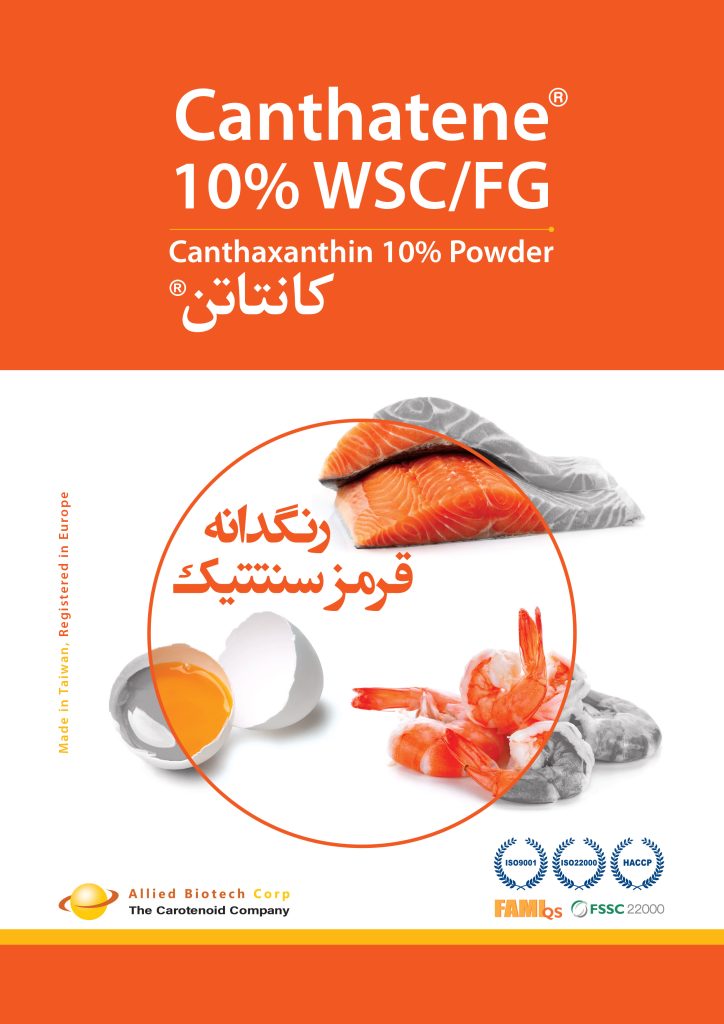Canthatene® 10% WSC/FG
Composition: Synthetic red pigment, Canthaxanthin 10%
Product Introduction and Mechanism of Action: Carotenoids are a group of natural fat-soluble compounds primarily synthesized by plants and certain microorganisms. They are widely found in nature, ranging in color from yellow to red. The commercial use of pigments, particularly Canthaxanthin, is common in the poultry and aquaculture industries to enhance the coloration of egg yolks, fish, and shrimp. Adding pigments to poultry feed significantly influences consumer preference, as eggs with rich, vibrant yolks are more desirable. Similarly, improved pigmentation in fish and shrimp—an essential quality indicator for consumers—can only be achieved using specific carotenoids such as Canthaxanthin (Canthatene®).
Canthatene® is a synthetic red powder containing 10% Canthaxanthin, specifically formulated to enhance pigmentation in poultry and aquaculture products. It is registered in the European Union under code 2015/1486.
Benefits of Use:
Poultry: Egg yolk color is a critical factor in consumer acceptance and purchasing decisions. The pigmentation, which varies from golden yellow to deep orange, depends directly on the carotenoid content in the hens’ diet. While corn-based diets provide some xanthophylls, their levels are often insufficient to achieve the desired yolk coloration. Therefore, natural or synthetic pigments are added to poultry feed to ensure optimal results. Canthaxanthin is efficiently absorbed and metabolized, enabling consistent and enhanced yolk pigmentation that meets consumer expectations.
Fish: For fish species such as trout and salmon, Canthaxanthin supplementation in feed is an effective strategy for improving pigmentation. This compound enhances the natural deposition of carotenoids in fish skin and flesh, thereby increasing the commercial value of the final product. Canthatene® is a reliable source of Canthaxanthin, approved for use in aquaculture.
Shrimp: In shrimp farming, Canthaxanthin supplementation significantly improves pigmentation, a key quality criterion in commercial markets. The addition of this pigment to shrimp feed enhances visual appeal and increases the economic value of the final product by ensuring a more vibrant, uniform coloration.
Dosage Recommendations:
- Egg yolk pigmentation: 5–50 g per ton of feed, depending on the desired yolk color and diet composition.
- Trout: 50–100 g/t of feed.
- Shrimp: 15–50 g/t of feed.
Contraindications: None.
Drug Interactions: None.
Withdrawal Period: None.
Storage Conditions: Store in a cool, dry place (recommended temperature: below 25°C).
Shelf Life: 48 months in original, unopened packaging under proper storage conditions.
Packaging: Two 5 kg aluminum foil bags per carton.

